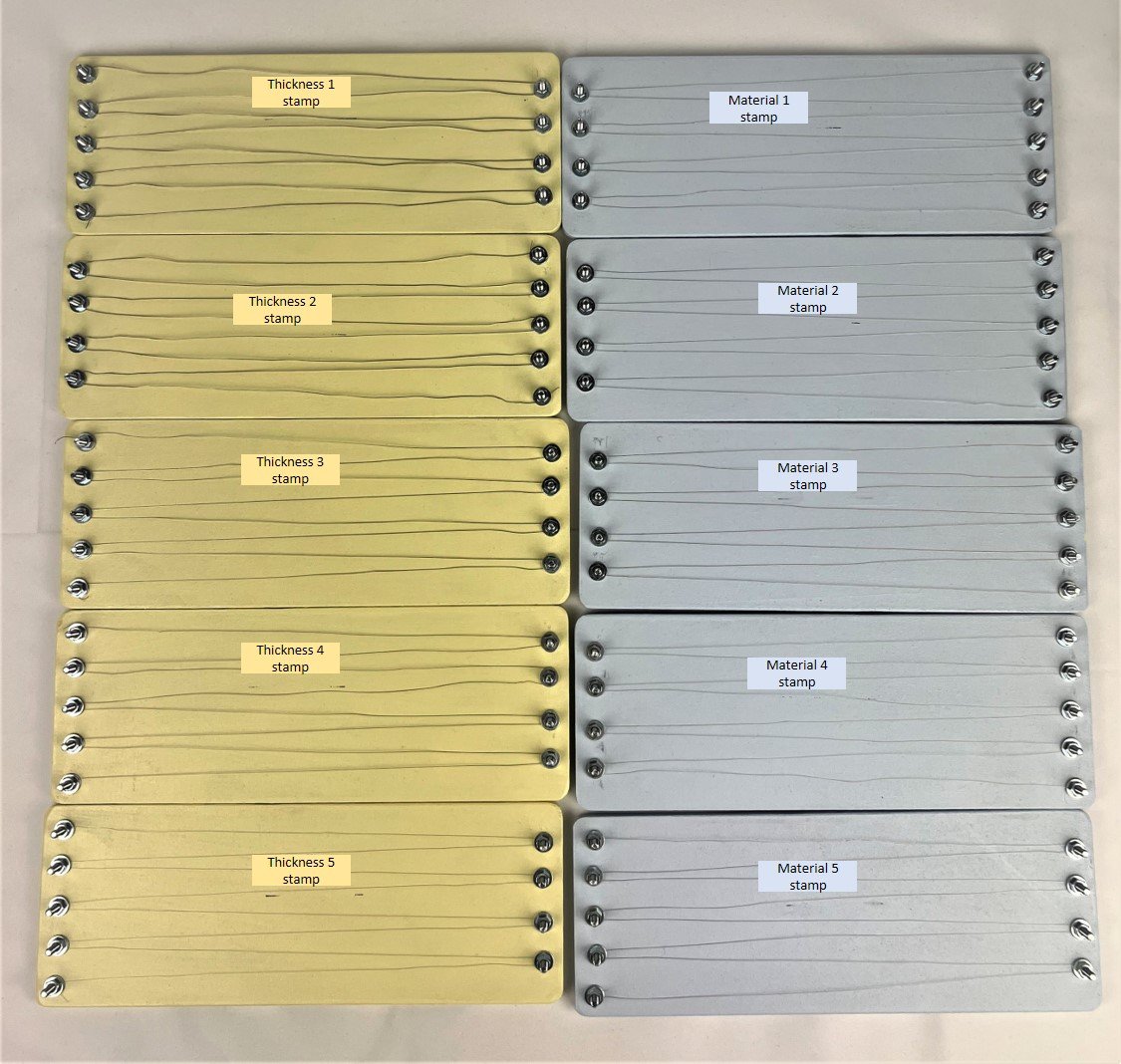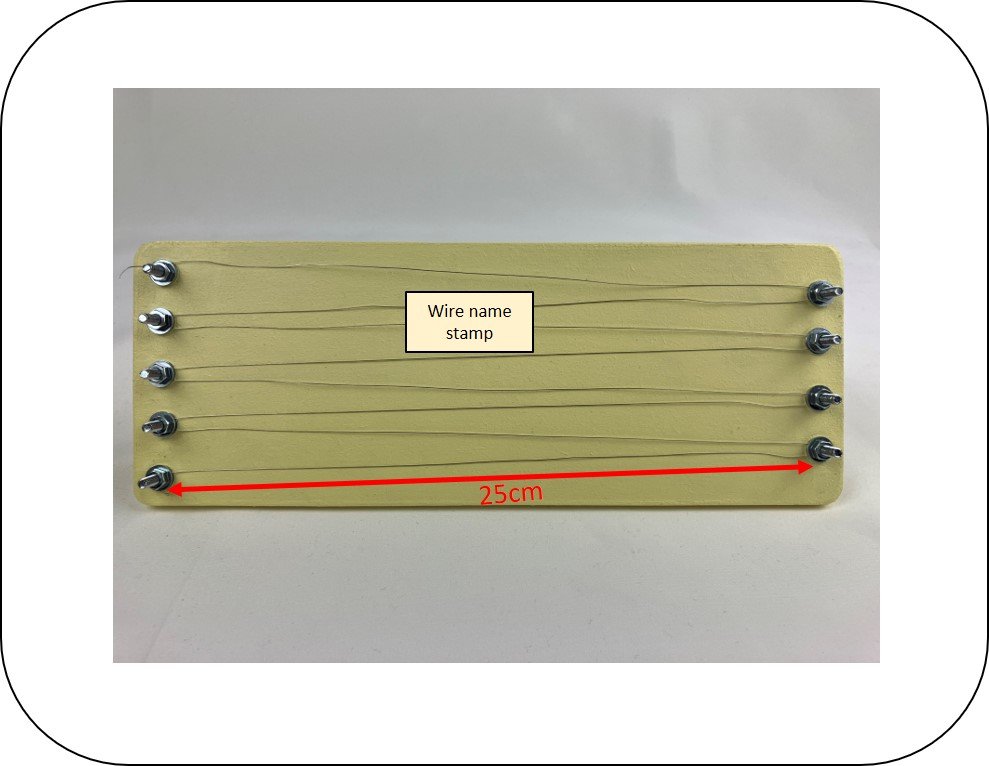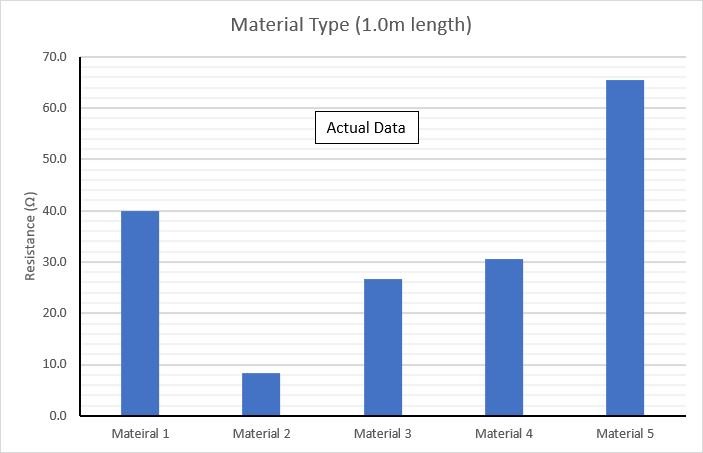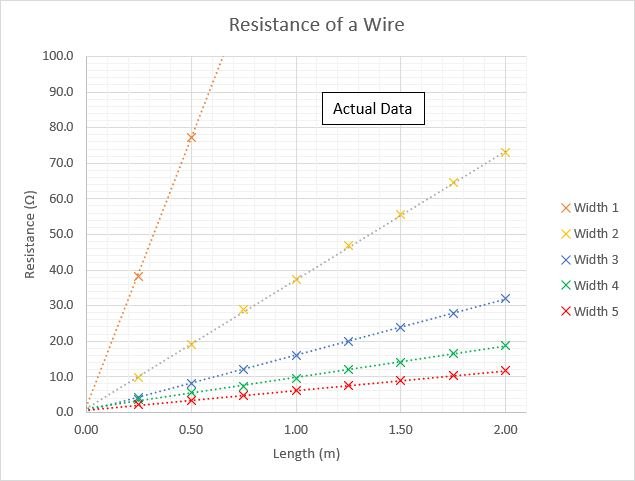Suggested Uses
1 - Each pupil group can work work with a single board and investigate the relationship between wire length and resistance. This will produce a very clear straight line through the origin for all wires.
2 - Pupils can do the above experiment several times (or pool data) to produce a multiplot graph as shown below. They’ll see the relationship is the same but each wire has a different gradient.
3 - Pupils can take turns with the boards, choose one length and then work with either the yellow set (thickness) or the blue set (materials) to investigate a 2nd variable. This challenges pupils to select the correct type of graph too.
4 - Particularly advanced or senior pupils doing assignments could use the equipment to investigate Resitance vs cross sectional area.











